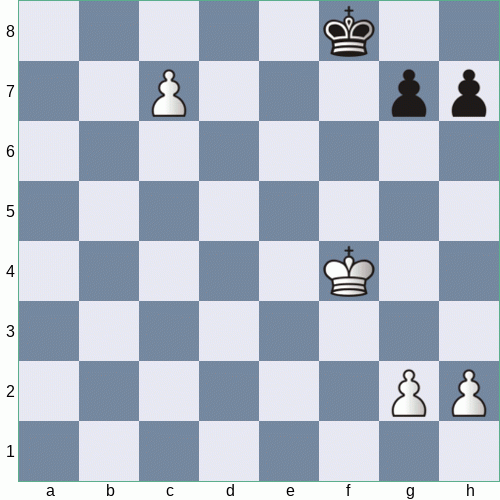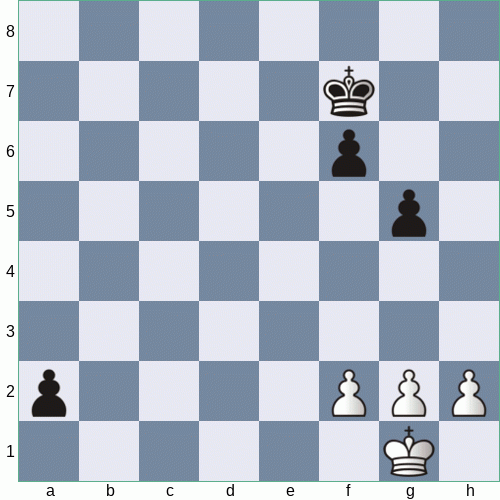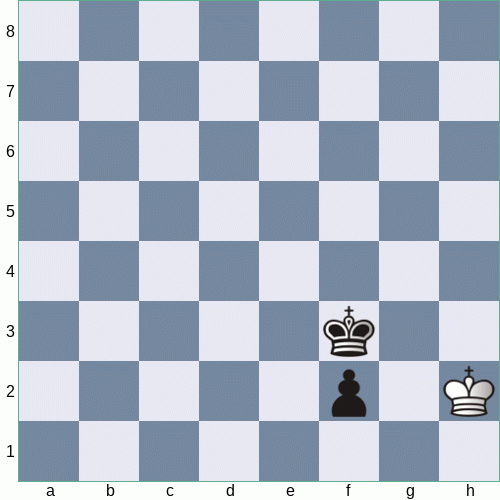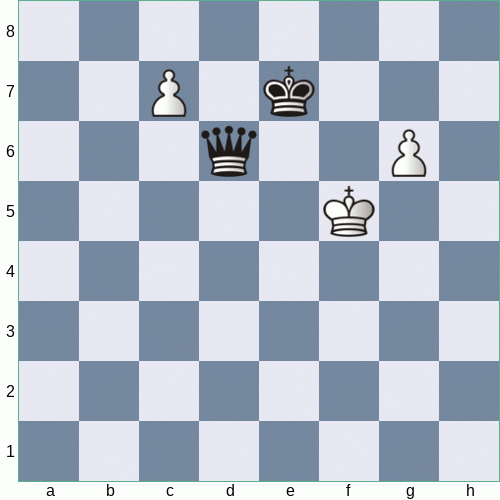Learning Center: Promotion
Pawn Promotion
One of the most striking abilities given to any piece in chess is the pawn's capacity to transform into a different piece upon reaching the far side of the board. We call this special move "promotion" because the new piece is more powerful than the pawn it replaces. Promoting a pawn to a queen
Promoting a pawn to a queenThe most common misconception regarding promotion is that a player can only promote to a piece that has already been captured. This likely comes from playing with physical pieces, where there are generally no "extras" available for a player to have a second queen, a third rook, etc. But whether you are playing with a physical set or an online one, the choice of promotion piece is not limited to captured pieces. It's quite possible, for example, for one player to have as many as nine queens — the original queen plus eight promoted pawns.
A new queen is, of course, the overwhelming choice of new piece. In this case the move is often called "queening". And choosing any piece besides a queen is generally referred to as "under-promotion".
Why would anyone under-promote? Usually for one of two reasons. First, promoting to a queen may produce a stalemate. In such cases it may be better to promote to a rook instead, if that avoids the stalemate but still provides a winning advantage. Second, it may be critical to check the enemy king with the move. If a queen would not accomplish that but a knight would, it could be better to promote to a knight instead so that the opponent does not get a free move.
Under-promoting to a bishop is very unusual, and it is extremely rare to encounter a game position where promoting to a bishop is the best move. It can happen, but most players will never experience it. For that very reason it's a common theme in composed problems.
People sometimes believe that the newly-promoted piece doesn't have full powers yet, can't produce check, can't produce checkmate, etc. None of that is true, the new piece is immediately effective and can check or checkmate like any other piece.
Now test your understanding on the following positions. Try to work out the answer yourself before clicking the "Reveal" button to verify. What is Black's best move?
What is Black's best move?and promoting to either queen or rook.
 What is Black's best move?
What is Black's best move?a rook. Promoting to a queen is stalemate!
 What is White's best move?
What is White's best move?to a knight, forking king and queen.




